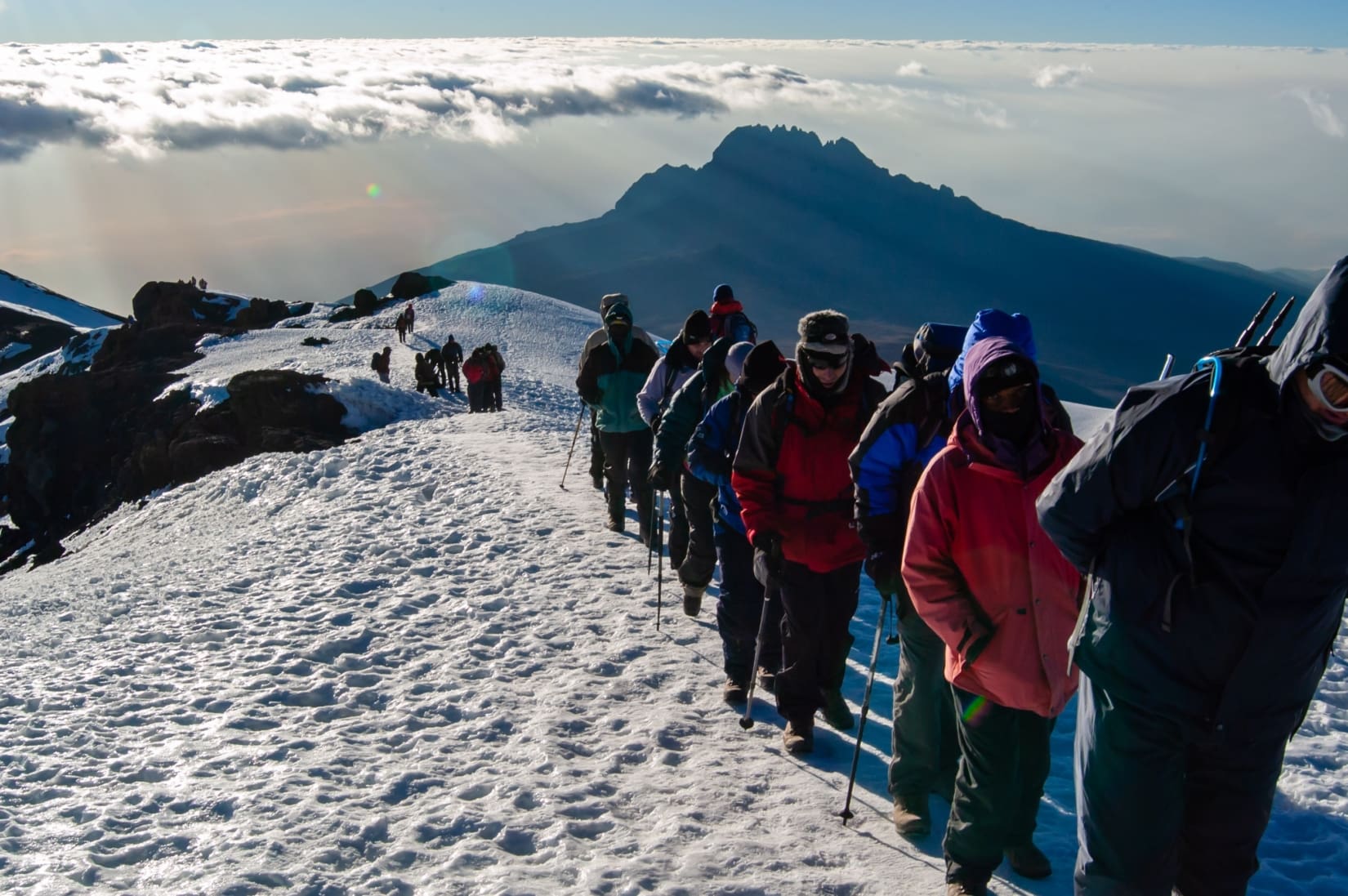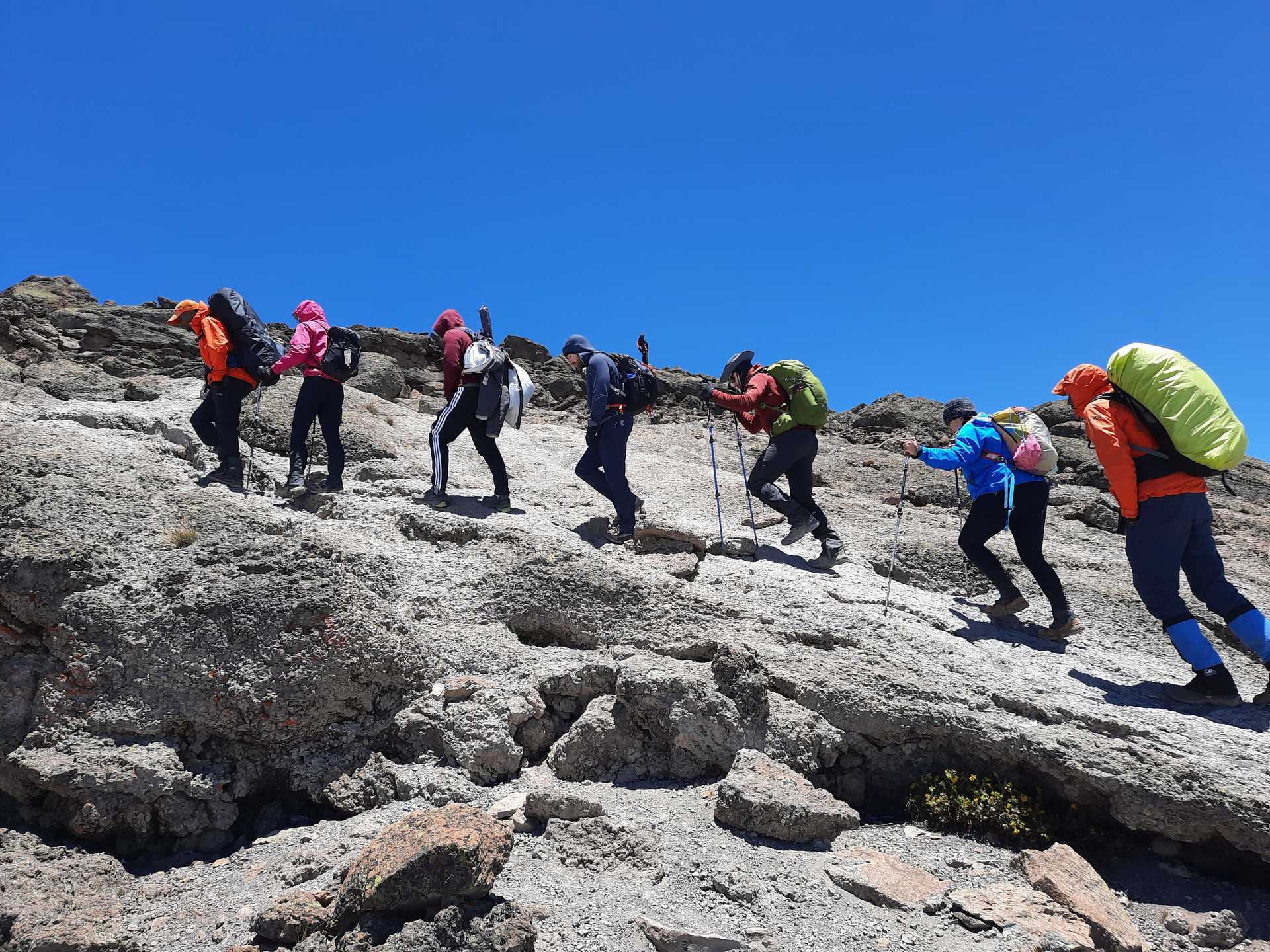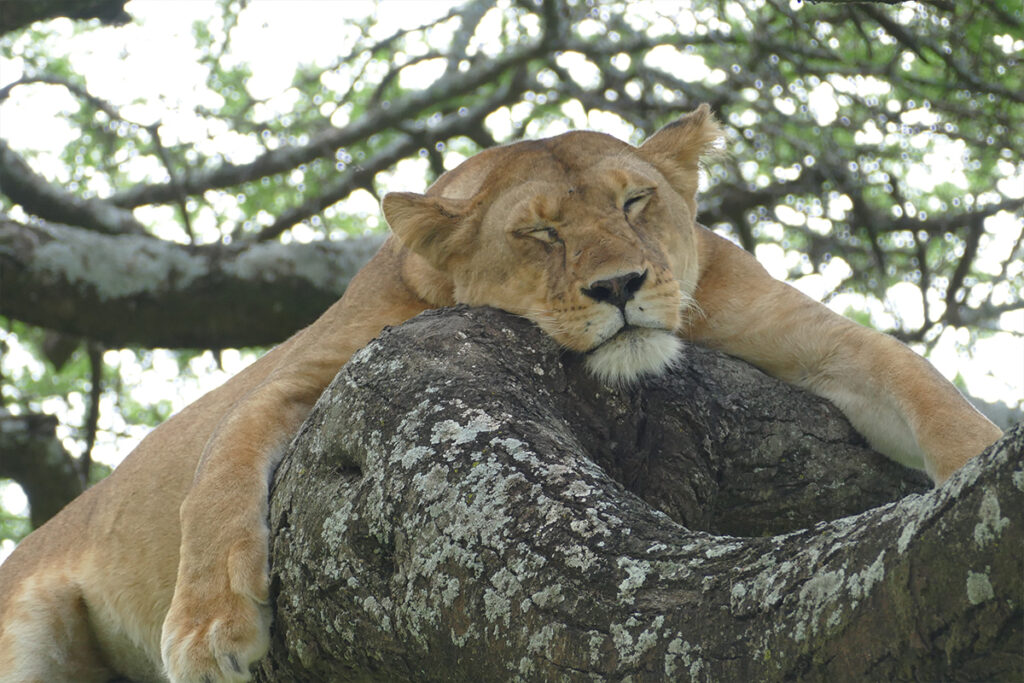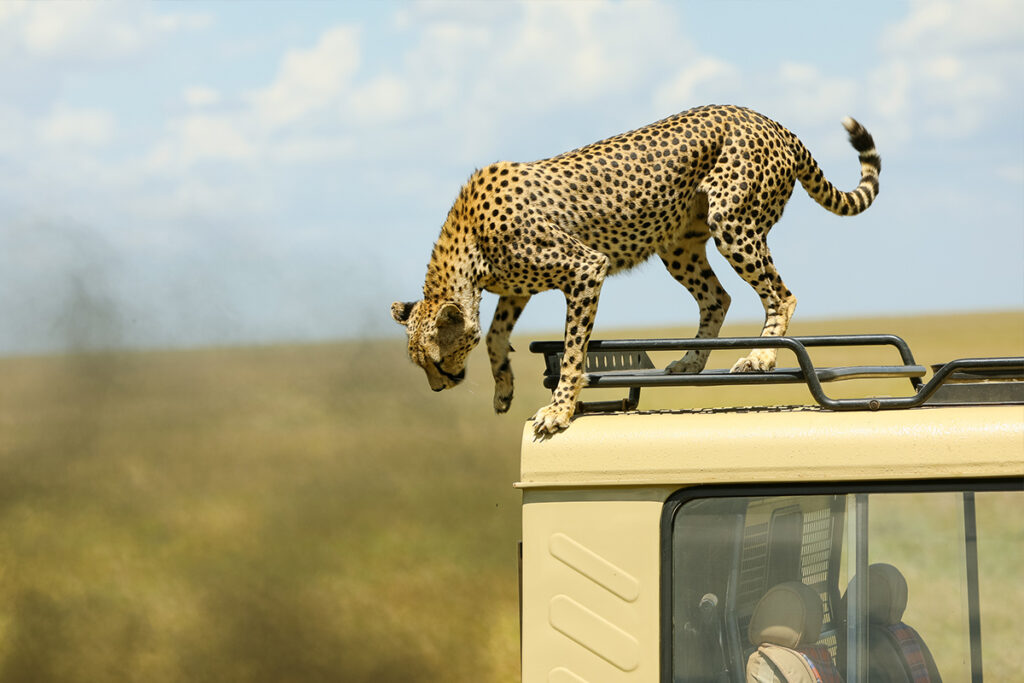Standing majestically at over 19,000 feet, Mount Kilimanjaro is as much a marvel as it is a challenge. This dormant stratovolcano draws thousands of climbers annually, all eager to summit Africa’s highest peak. Yet, not everyone is aware that only about half of them are successful, largely due to the lack of a comprehensive understanding of the climb.
Kilimanjaro climbing tours present a unique blend of adventure and heritage, enticing climbers beyond merely reaching the summit. Since the first recorded ascent in 1889, these tours have evolved, integrating local culture and wildlife experiences. With a 60% success rate when using professional guides, it’s crucial for climbers to tap into expert-led tours, optimizing their chances of witnessing the awe-inspiring sunrise from Uhuru Peak.

Kilimanjaro Climbing Tours: A Comprehensive Guide
Mount Kilimanjaro, the highest peak in Africa, attracts climbers from around the world with its spectacular views and diverse ecosystems. Climbing Kilimanjaro is not just a test of physical endurance but also a spiritual journey, as it takes you through five distinct climate zones. Each route varies in difficulty, duration, and scenery, offering unique experiences for adventurers. The most popular routes include the Marangu, Machame, and Lemosho paths. Choosing the right route is crucial for maximising your enjoyment and safety.
Preparation is key to a successful Kilimanjaro climb. Physical fitness plays a significant role, with many experts recommending a mix of cardio, strength training, and hiking to build stamina. Acclimatization is another crucial factor to prevent altitude sickness. For your gear, it is essential to have proper clothing, sturdy boots, and reliable camping equipment. Here are some gear essentials you should consider taking:
- Layered clothing for varying temperatures
- Waterproof jacket and pants
- Insulated sleeping bag
- Sunscreen and sunglasses
- Trekking poles
Timing your climb is vital as weather conditions on Kilimanjaro can be unpredictable. The best months to climb typically fall between January to March and June to October. These periods offer stable weather, making your journey safer and more enjoyable. Keep in mind that the mountain can become crowded during peak seasons, so booking in advance is advisable. Knowledge of the weather patterns can greatly improve your climbing experience.
Health and safety are paramount when climbing Kilimanjaro. Adequate acclimatization helps reduce the risks of altitude sickness, which affects many climbers. Regular hydration, a balanced diet, and getting enough rest are crucial steps to ensure your well-being. Hiring experienced guides and porters can greatly enhance your safety and success rate. Information on emergency protocols and evacuation plans should be a part of your preparation.
10 Things I Wish I Knew BEFORE Climbing Mt Kilimanjaro! | Follow Alice | 4K
Understanding the Major Routes to Summit Kilimanjaro
There are several major routes to climb Mount Kilimanjaro, each offering distinct experiences. The Marangu Route is known for its hut accommodations, which provide more comfort compared to tents. It is often considered the easiest path, though it’s less scenic than others. The Machame Route, also known as the “Whiskey Route,” is famous for its stunning views and challenging trails. While it demands more physical effort, it rewards climbers with breathtaking scenery.
The Lemosho Route is another popular choice, starting on the western side of the mountain. It offers a longer trekking experience, allowing more time for acclimatization. This route is perfect for those who wish to increase their chances of reaching the summit successfully. The Rongai Route comes from the north and is generally quieter, making it ideal for trekkers seeking solitude. Its gentle gradient appeals to climbers looking for a less strenuous ascent.
For those seeking a less conventional path, the Northern Circuit Route offers the longest and most comprehensive journey. This route circles the mountain, providing 360-degree views of its stunning landscapes. It is praised for both its panoramic perspectives and fewer crowds. The Umbwe Route is the shortest and steepest, suitable for experienced trekkers who seek a challenge. It is often less crowded, offering an isolated experience.
The various routes cater to diverse trekking preferences and abilities. Here’s a quick comparison of major routes:
| Route | Duration (Days) | Difficulty |
|---|---|---|
| Marangu | 5-6 | Moderate |
| Machame | 6-7 | Challenging |
| Lemosho | 7-8 | Moderate |
| Rongai | 6-7 | Moderate |
| Northern Circuit | 9-10 | Moderate |
| Umbwe | 5-6 | Very Challenging |
Preparing for Your Climb: Fitness and Gear Essentials
Climbing Kilimanjaro is a test of both physical and mental endurance. To prepare, it’s essential to focus on your fitness. Cardiovascular exercises like running, cycling, and swimming will build stamina. Strength training is also vital, especially for your legs. Incorporate activities like hiking on varied terrains to simulate the climb.
Along with fitness, having the right gear is crucial for a successful climb. Proper clothing layers can help you adapt to the changing temperatures. A good-quality, waterproof jacket and pants are necessary. Sturdy hiking boots are also a must to navigate the rocky paths. Here’s a checklist of essential gear to consider:
- Base layers (thermal underwear and shirts)
- Insulated jacket
- Gloves and hat
- Sunglasses with UV protection
- Water bottles and purification tablets
Nutrition and hydration play a significant role in preparing for the climb. Maintaining a balanced diet that includes proteins, carbs, and healthy fats will fuel your body. Staying hydrated is equally important to prevent altitude sickness. On the mountain, consume energy snacks like nuts, fruits, and energy bars. These will keep your energy levels high during the trek.
Planning your ascent also includes understanding the logistics. Hiring a reputable trekking company can provide you with experienced guides and porters. They can assist with navigating the routes and setting up camps. Knowing the approximate costs and what’s included can help you budget better. Here’s a comparison table to help:
| Item | Estimated Cost ($) |
|---|---|
| Gear and Equipment | 500 – 1000 |
| Guide and Porter Fees | 1500 – 2500 |
| Park Fees | 800 – 1000 |
| Travel Insurance | 100 – 200 |
Best Time to Climb Kilimanjaro: Weather Considerations
Climbing Mount Kilimanjaro is all about choosing the right time, as the weather can greatly affect your experience. Kilimanjaro has two main climbing seasons. The most popular seasons are from January to March and June to October. During these times, the weather is more stable, with clearer skies and less rainfall. These conditions make it easier and safer for climbers.
Between January and March, the mountain sees mild temperatures and fewer crowds. This period is perfect for climbers who prefer a quieter trail. The scenery is lush, as the short rains end in December, leaving behind vibrant landscapes. Temperatures can drop significantly at higher altitudes, so warm gear is essential. These months offer a unique chance to enjoy the snow-capped peak.
From June to October, Kilimanjaro offers a different allure. This is the dry season, making the path less muddy and easier to navigate. It’s also a busy season as many climbers take advantage of their summer breaks. Wildlife is more visible during this time, adding to the adventure. However, it’s crucial to book in advance due to the increased popularity.
The months of April, May, and November are generally avoided by climbers. These are the rainy seasons, which can make trails slippery and limit visibility. The mountain experiences more clouds, obscuring the stunning views. Although challenging, some trekkers opt for this time for a more solitary experience. Here’s a quick guide to Kilimanjaro’s weather by month:
| Month | Weather | Climbing Conditions |
|---|---|---|
| January – March | Mild, some snow | Fewer crowds |
| April – May | Rainy | Challenging, wet |
| June – October | Dry | Best conditions |
| November | Short rains | Slippery trails |
| December | Transition | Variable |
Choosing when to climb Kilimanjaro largely depends on personal preferences. Whether you desire solitude, perfect weather, or lush landscapes, understanding the seasonal changes will help you decide. Always consider the impact of crowds, your tolerance for the cold, and how you handle wet conditions. Deciding the best time is essential for making your Kilimanjaro adventure unforgettable. Proper planning will enhance your climbing experience.
Health and Safety on the Mountain
Climbing Mount Kilimanjaro requires careful attention to health and safety. Altitude sickness is a common concern as you ascend the mountain. Symptoms may include headaches, nausea, and difficulty breathing. To minimize risks, climbers should spend adequate time acclimatizing. Opting for longer routes can help your body adjust more gradually.
Staying hydrated is crucial to combating altitude sickness. Drinking ample water helps your body adjust to higher elevations. It’s beneficial to drink small amounts frequently rather than large quantities at once. Using water purification tablets can ensure you have safe drinking water. Keeping energy levels up with high-calorie snacks is also important.
Weather conditions on Kilimanjaro can change rapidly, affecting your safety. Dressing in layers allows you to adapt to sudden temperature changes. Carrying weather-appropriate gear ensures you’re prepared for wind, rain, or snow. A good quality sleeping bag is essential for warmth during cold nights. Here are some key safety gear essentials:
- Warm hat and gloves
- Waterproof backpack cover
- First aid kit
- Headlamp with extra batteries
- Sunscreen and lip balm
Choosing an experienced guide and team can significantly increase your safety on the climb. Guides are trained to recognize and address altitude sickness and other health issues. They also play a crucial role in maintaining a steady pace on the trail. Listening to their advice can enhance your overall experience. Prioritizing safety leads to a more enjoyable journey.
Being prepared and informed about the mountain’s challenges helps ensure a safe climb. Understanding potential risks and taking preventive measures can make the adventure memorable. Always pack essential supplies and gear to navigate unexpected scenarios. This preparation helps climbers focus on enjoying the breathtaking views. Health and safety are key to reaching the summit successfully.
Cultural Insights and Local Experiences around Kilimanjaro
The area surrounding Mount Kilimanjaro is rich with cultural diversity and history. The mountain itself is in Tanzania, a country known for its vibrant ethnic groups. The Chagga people, who live on the slopes of Kilimanjaro, have a deep connection to the land. They have adapted to the mountain’s terrain with terrace farming techniques. Visiting a Chagga village offers a glimpse into their traditional way of life.
Local markets near Kilimanjaro are bustling hubs of activity. Here, you can explore a variety of goods, from handmade crafts to fresh produce. These markets are a perfect place to interact with locals and learn about their daily lives. Sampling local foods like ugali and nyama choma offers a taste of Tanzanian cuisine. This allows travelers to engage with the culture on a deeper level.
The region boasts a strong tradition of storytelling and music. Traditional songs and dances are a vital part of cultural festivals and ceremonies. Attending these events provides insight into the community’s values and beliefs. Many travelers find these experiences both educational and entertaining. They leave with a greater appreciation for the world’s diverse cultures.
There are several places to visit around Kilimanjaro that highlight the area’s history and environment. The Kilimanjaro National Park is not only a climbing destination but also a UNESCO World Heritage site. The park contains diverse wildlife like elephants and leopards, perfect for safari adventures. Additionally, tours to local coffee farms showcase another crucial aspect of the region’s economy. These experiences provide a broader understanding of life around Kilimanjaro.
Exploring the cultural and local aspects around Kilimanjaro enriches the overall climbing experience. Travelers have the opportunity to engage directly with communities and environments unique to Tanzania. Through tours, food, and interactions, climbers gain more than just a physical achievement. This cultural immersion adds a valuable dimension to the adventure, leaving lasting memories. It’s a journey through both nature and humanity.
Key Takeaways
- There are various routes to climb Kilimanjaro, like Marangu and Machame.
- Preparing with fitness training and the right gear is essential for success.
- The best times to climb are January-March and June-October.
- Acclimatizing properly helps reduce the risk of altitude sickness.
- Experiencing local culture adds value to the Kilimanjaro climbing adventure.




